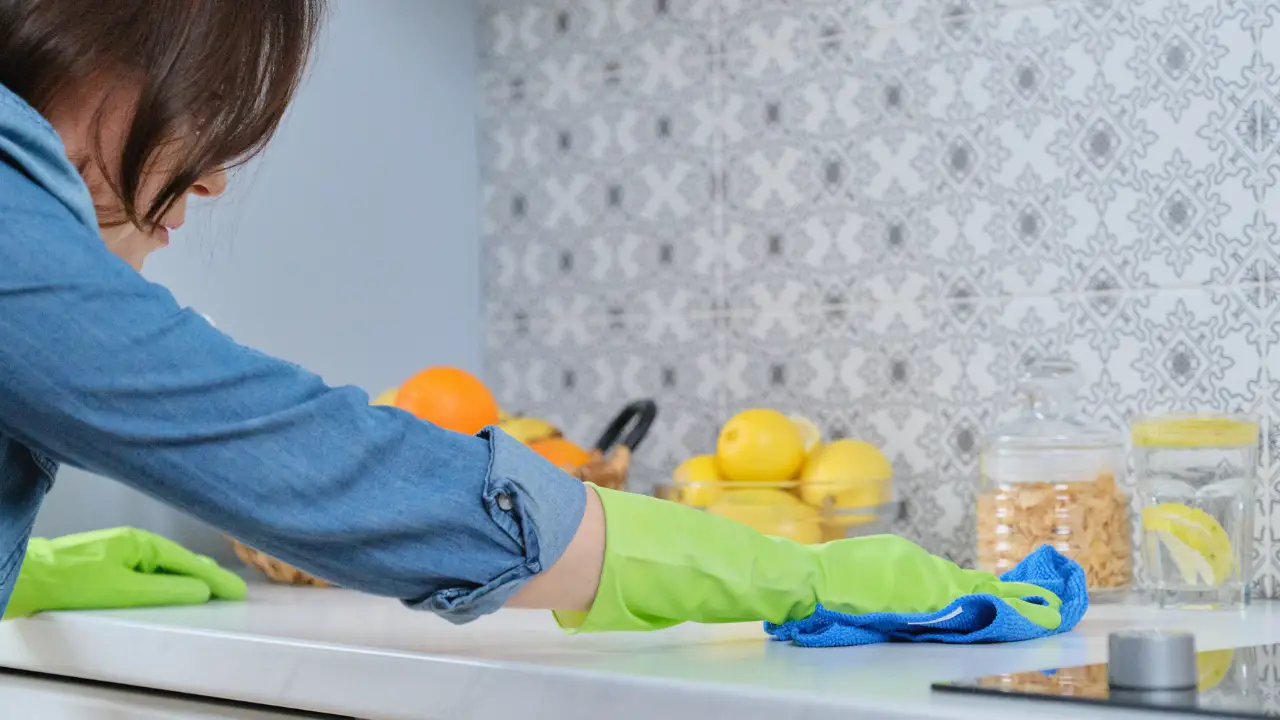I know how frustrating and uncomfortable it can be when allergens invade our homes. Over the years, I’ve found that allergy-proofing the home can significantly alleviate the symptoms like sneezing, itching, and watery eyes.
In this article, I’ll share some tips on how to reduce allergy symptoms in the home, so you too can breathe easier and feel more comfortable.
It’s important to identify and understand the triggers that cause your allergy symptoms. Common household allergens include dust mites, pet dander, mold, and pollen. By learning which allergens affect you the most, you can tailor your efforts to minimize exposure to those specific irritants. It’s essential to create a clean and clutter-free environment to help eliminate allergens from the air.
Some of the most effective ways to achieve this clean environment include using an air purifier, regularly washing bedding and curtains, and vacuuming frequently. Additionally, it’s important to control the humidity in your home, as high humidity can encourage the growth of mold and dust mites.
Table of Contents
Identify Common Allergens at Home
Dust Mites
Dust mites are common allergens. These tiny insects live in bedding, upholstered furniture, and carpets. To reduce my exposure to dust mites, frequently wash all bedding in hot water and use a vacuum cleaner with a HEPA filter. Additionally, I try to keep humidity levels below 50% as dust mites thrive in humid environments.
- Wash bedding weekly in hot water (Always read your bedding labels)
- Vacuum regularly with a HEPA filter (I have selected some great products below)
- Control humidity levels below 50% (A decent dehumidifier can be a game changer)
Pet Dander
Pet dander causes allergy symptoms as well. Shed skin cells, hair, and saliva from pets can accumulate on furniture, carpets, and other surfaces in homes. To minimize exposure to pet dander, groom pets regularly, clean bedding, and use an air purifier with a HEPA filter where possible.
- Groom pets regularly
- Clean pet bedding
- Use an air purifier with a HEPA filter
Mold Spores
Mold spores are another common allergen. Spores grow in damp areas of homes, such as bathrooms, basements, and kitchens. To prevent mold growth, keep humidity levels below 50% and clean damp areas with mold-killing products.
- Maintain humidity levels below 50%
- Clean damp areas with mold-killing products
- Properly ventilate bathrooms and kitchens
Pollen
Pollen enters homes through open windows and doors, as well as on clothing and shoes. To reduce exposure to pollen, keep windows and doors closed during high pollen seasons, use air conditioning/purification, change clothes and shower after spending time outdoors.
- Keep windows and doors closed during high pollen seasons
- Use air conditioning
- Change clothes and shower after spending time outdoors
Tips for Reducing Allergy Symptoms
Air Purifiers
I’ve found that using air purifiers in my home significantly reduces allergy symptoms. Purifiers help remove allergens such as pollen, dust mites, and pet dander from the air. The best purification systems will have HEPA filters and sometimes activated carbon filters. I recommend placing an air purifier in the rooms where you spend the most time, like the bedroom and living room.
Air purifiers with HEPA filters.
*As an affiliate, we may earn a commission if you make a purchase. Theres no additional cost to you.
Regular Cleaning
To minimize allergy triggers, make sure to maintain a regular cleaning routine. This includes:
- Vacuuming floors and carpets using a vacuum cleaner with a HEPA filter, at least once a week
- Dusting surfaces and furniture using a damp cloth to prevent dust from spreading
- Wash curtains and upholstery periodically to remove accumulated allergens
Vacuum cleaners with HEPA filters.
*As an affiliate, we may earn a commission if you make a purchase. Theres no additional cost to you.
Bedding Material
Bedding material can also contribute to allergy symptoms. Use hypoallergenic materials for pillows, mattress covers, and blankets. Additionally, wash bedding every week to remove dust mites and other allergens.
Humidity Level Control
It’s important to control humidity levels in my home to prevent mold and dust mites. I use a dehumidifier to keep humidity levels between 40% to 50%. Also, I make sure that my home is well-ventilated by:
- Opening windows to let in fresh air
- Using exhaust fans in the kitchen and bathroom
- Making sure my clothes dryer is vented outside
Dehumidifiers with HEPA filters.
*As an affiliate, we may earn a commission if you make a purchase. Theres no additional cost to you.
Responsible Use of Medications and Preventive Measures
Oral Antihistamines
When it comes to treating my allergy symptoms, I often turn to oral antihistamines. These medications help to block the release of histamine—a chemical that causes allergy symptoms. I make sure to choose a non-drowsy formula, such as cetirizine or loratadine, to avoid feeling groggy throughout the day. I follow the dosage instructions on the label and consult with my doctor before taking any new medication.
Intranasal Corticosteroids
Aside from oral antihistamines, I also use intranasal corticosteroids to help reduce inflammation in my nasal passages. These medications, such as fluticasone and mometasone, are available over the counter or by prescription. I spray them directly into my nose as directed, making sure to clean the nozzle after each use. Preventive measures include:
- Using an air purifier to reduce indoor allergens
- Changing air filters regularly in heating and cooling systems
- Washing bedding at least once a week in hot water
- Vacuuming frequently with a HEPA-filter-equipped vacuum
- Keeping windows closed during pollen season
Immunotherapy
For long-term relief from my allergies, I have considered immunotherapy, also known as allergy shots. This treatment involves receiving small, gradually increasing doses of my specific allergens to help build tolerance. It can be a time-consuming process, often taking a few years to complete, but many people find it to be an effective way to significantly reduce allergy symptoms. I discussed it with my doctor to see if I am a suitable candidate for this therapy.
Consult a Specialist
As someone who suffered from allergies, I found relief by consulting with a specialist. By seeing an allergist, I was able to pinpoint the specific causes of my symptoms, including pollen, pet dander, mold, and dust mites.
During my first visit, the allergist reviewed my allergy issues and medical history. We then discussed my symptoms and lifestyle before conducting the necessary tests. I found it helpful to prepare ahead of time by:
- Bringing a list of the medications I had tried for allergy relief
- Noting any changes in my symptoms over time
- Jotting down any questions I wanted to ask
After identifying the allergens that affected me, I received actionable advice on how to minimize my symptoms. My allergist suggested some practical steps, such as:
- Investing in an air purifier to reduce pollen and pet allergens
- Regularly washing my bedding in hot water to combat dust mites
- Using a hypoallergenic mattress cover
- Keeping indoor humidity levels between 30-50% to deter mold growth
Additionally, my allergist discussed potential treatment options like prescription medication and immunotherapy.
Ultimately, consulting a specialist not only helped me understand the causes of my allergy symptoms but also equipped me with the knowledge and tools to manage them effectively.
Conclusion
In my experience, reducing allergy symptoms in the home is achievable by following a few key strategies. Implementing these changes can make a difference in the comfort and well-being of those affected by allergies.
Firstly, maintaining a clean home is essential. Regularly vacuuming and dusting can help to minimize allergens like dust mites and pet dander. Additionally, using air purifiers with HEPA filters can effectively filter out pollen, mold spores, and other airborne allergens.
Another important step is to prioritize hypoallergenic materials in beddings and furnishings. Encasing mattresses and pillows in allergen-proof covers and using hypoallergenic beddings can significantly lessen exposure to allergy triggers while sleeping.
Lastly, controlling indoor humidity and keeping homes well-ventilated is crucial. This can help to prevent mold and mildew growth, which are common allergy triggers. Investing in a dehumidifier and using exhaust fans during cooking and bathing can be beneficial in this regard.
While these strategies may not eliminate allergy symptoms entirely, they have proven helpful in making my living space more comfortable and less prone to allergy-triggering elements.












